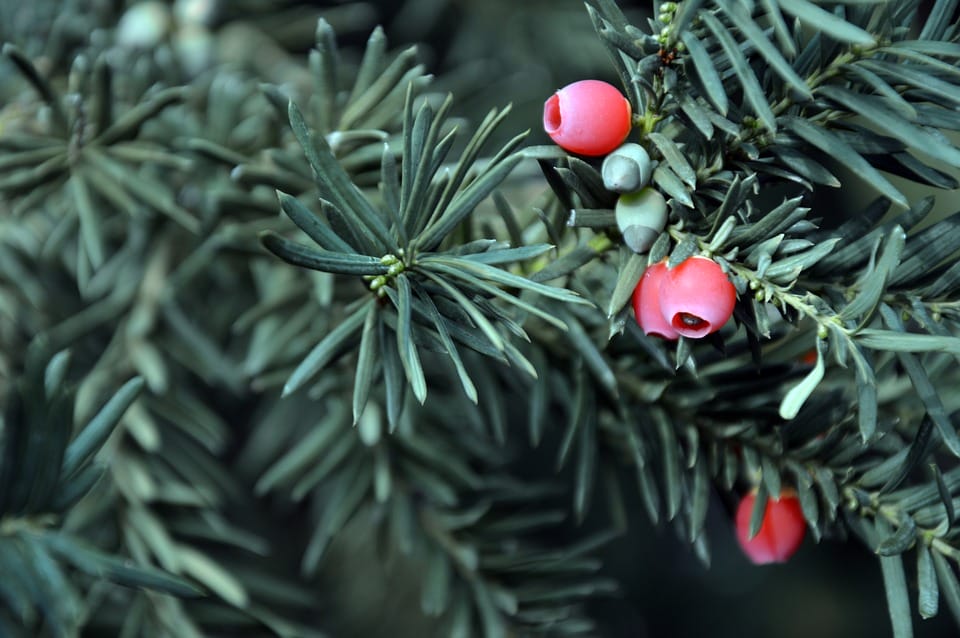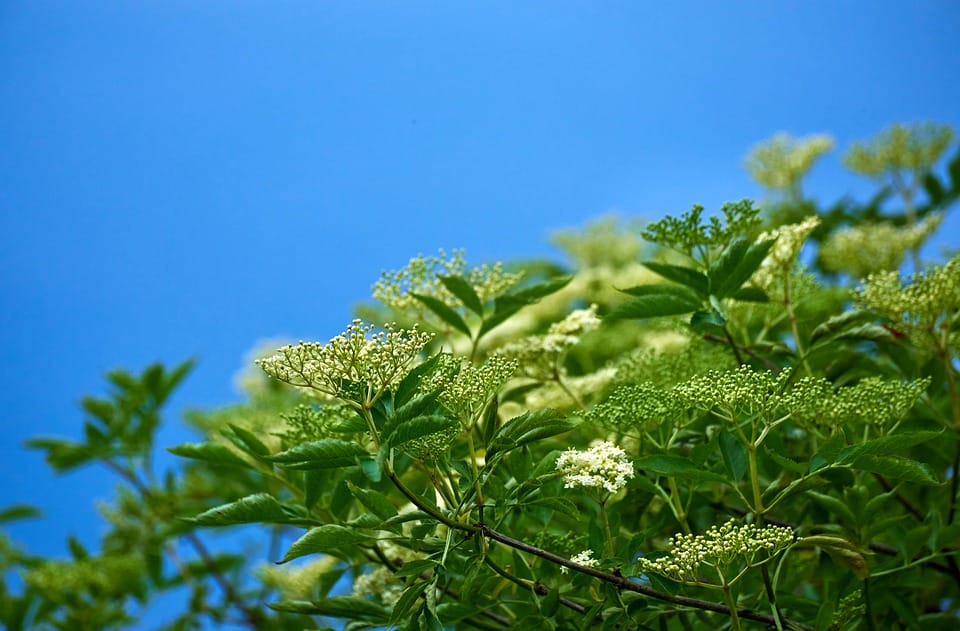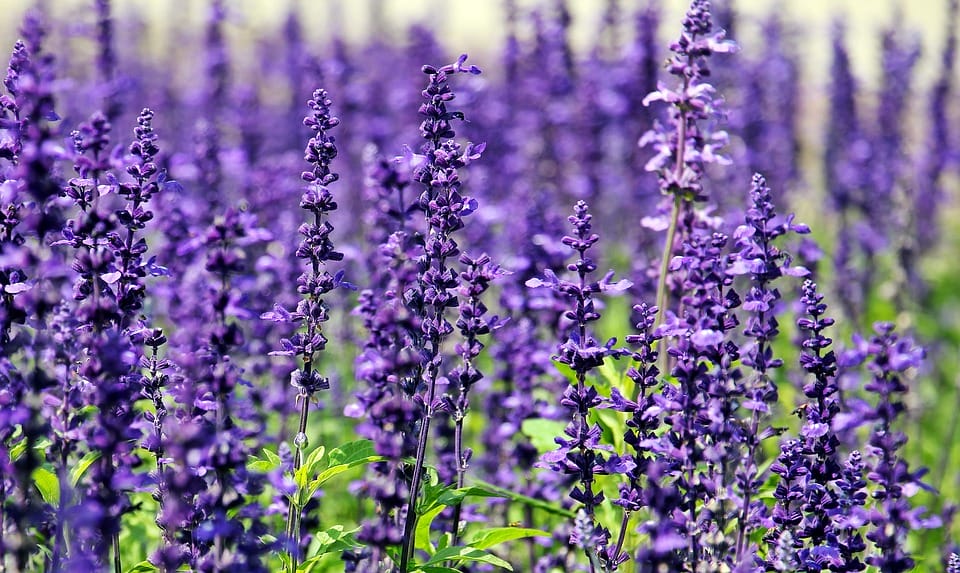Mistletoe
For Druids, mistletoe symbolised the spirit, as it grew in the air. Mistletoe was most treasured when found on oak trees because they are considered sacred.
It is thought that Druids believed that the hand of God placed it there with a strike of lightning. At the end of the year, it would be cut off by priests in white gowns who would not permit the plant to touch the ground. Two white bulls would then be slain where the oak had grown and the twigs of the mistletoe would be spread among the people.

People believed the plant was protective and would place the twig above doors or carve them into rings and jewellery to ward off evils, such as attacks from witches and poisons. It could also be used as a general protection amulet. In British paganism, it was said that mistletoe was hung with red ribbon and then burned during Imbolc to protect the home and ward off disease at the height of winter.
Mistletoe (Viscum album) does not only grow from oak trees. It is a ‘hemiparasite, meaning it grows on a host tree, from which it takes water and support. Today there are approximately 1,500 species of the plant. You can see a bunch of it in the Meadow field, high up on a tree.
Yew Tree
Another tree respected for its magical properties is the yew tree.
Also named ‘The Tree of Resurrection’ or ‘The Goddess Tree’, it has the ability to regenerate itself. A branch can grow down the centre of a tree, forming a brand new one, and because of this ability, it can be difficult to identify a yew tree’s exact age.

The oldest yew tree in the UK is thought around 2000–3000 years old and is found in a churchyard in Perthshire. Yew trees in England are often found in churchyards, popping up in approximately 500 around the country. It is thought yew trees could purify victims of the plague if placed on their graves.
Elder tree
The Elder tree is a truly magical plant. All parts of the tree can be used for good, like food and medicine.
The English elder comes from the Anglo-Saxon words, aeld meaning fire. In Elder tree folklore, the tree was believed to host a powerful spirit called the Elder Mother. People hung dried elder leaves to ward off evils from their home, and it was thought to be a lucky omen if an Elder tree grew near your home, as it would offer protection to your household.

Use of the Elder tree required asking permission through a ritual, and if not asked, it is said the Elder Mother would seek revenge against the person who had offended her.
In some Christian legends, the elder tree has been given negative connotations. It was thought that Judas Iscariot hanged himself on the tree after betraying Jesus. It is also said that the wood used in the crucifixion came from this tree, although it is unlikely the weight of the wood could bare the weight of a man.
Sage
Sage has become a widely used ingredient in our food dishes today but did you know the herb has a long history of being used for its healing properties?
The scientific name for sage is Salvia which comes from the Latin word Salveo, “to heal” or “to save”.

The Romans regarded sage as a holy herb. They used it to clean their teeth and believed it aided memory function. The Romans and the Egyptians both used the herb to preserve meat and to help with fertility.
In the Middle Ages, sage was used as medicine. An old English practice was to eat sage every day in May, which was thought to grant immortality, and fresh sage leaves were said to cure warts, which may be due to their antibacterial properties. During this time people would use sage to cover rotting meat, both to help protect themselves and cover the smell, which may be why it is still so commonly used with roasting meat now.
Further reading:
Myths and Legends of Flowers, Trees and Fruit, Charles. M. Skinner


